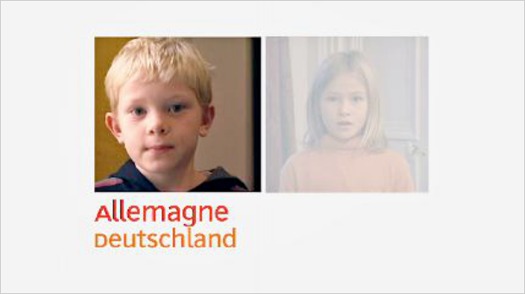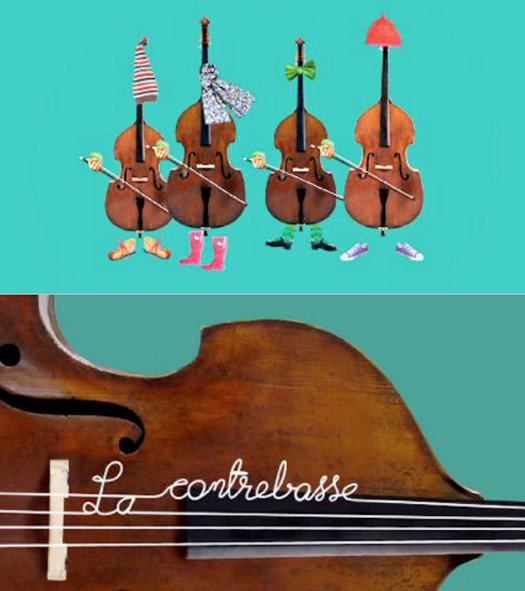
Karambolage is a kids’ television show produced by ARTE, a French-German arts and culture channel, whose mission is to promote cross-cultural understanding, at first between the famously quarrelsome French and Germans, then broadening to include each country’s growing immigrant populations. Rarely have I seen a cultural product of any kind handle such a delicate task with greater verve, sensitivity or smarts. Its particular genius? Storytelling that arises from things, well-chosen objects that unspool our longings for us, that tether the wordlessness of experience to something concrete that positively compels us to talk.
I first stumbled on Karambolage — the name means “collision”, like the click of billiard balls — when I moved to Berlin for a year-long journalism grant in 2005. I have lived in Berlin repeatedly for stretches ever since. Unsurprisingly, television everywhere washes over you in trashily abundant waves. Like Mark Twain marveling at how even the smallest children in Paris speak fantastic French, you simply cannot believe how much well-constructed German grammar it takes to hold up the expensive, shoddily engineered edifice that is German TV: schmaltzy folk dancing, celebrity reportage, and reality TV, all shamelessly transparent in import even if you understand not one Wort. (Sidebar: perhaps the ultimate homely reality-TV show happens to be German: VOX’s Das Perfekte Dinner, in which ordinary Germans invite each other over for a home-cooked meal, then evaluate the host’s skill in closet-cam interviews. Its only saving grace is its sweet lack of snark: since the guests take turns inviting each other over, the critique lands with infinite softness, itself a sight to behold in a remarkably blunt country.)
Karambolage is very different from all this Dreck . As I explained in a recent Slate post, each show’s format open like a velvety-black Wunderkammer, where each segment shines in its specificity like a jewel. The video segments rotate through a variety of categories: fairy tales, histories, objects, rituals, onomatopoeia, words, inventions. This last category is a visual-only essay, examining a single object as it appears across scenes in France and Germany. (A recent segment focused on Kellerfenster, the scrolled screens that cover basement windows.) Each show closes with a puzzle: 30 seconds of footage taped either in Germany or France, with only one clue within the scene — usually a telltale logo or street-sign— to betray its location.
Two segment categories take wordlessness a long way. Lautmalerei is a street survey in which French and German adults are asked to make a particular onomatopoetic sound: tickling, farting, revolver shots, or a reaction to a nasty surprise. The series Was mir fehlt (“What I miss”) embodies whole acres of feeling, bond up in a discrete object. Each clip features one speaker describing in their own language (overdubbed into German or French) an object they miss from their homeland: a Turkish samovar, an English jar of marmite, a Filipino-style broom. Handling the objects before our eyes, or rolling a native word in their mouths, they speak words about or around the thing — explaining its component parts, how or why to use it — but wordlessness actually carries the day. Watching their practiced fingers, feeling their pauses — the true story, all the weight of experience with that thing, is conveyed in what we see, only incidentally in what is said.
An Algerian woman describes an exclamation of joy, “das Youyou” in German
But Karambolage’s crowning glories are its fully illustrated segments, in which one storyteller explains a concrete phenomenon: for instance, a head-scratching expression like the German and French equivalents of “Easy Street”: Schlaraffenland and Pays de Cocagne. (The former is the product of a mispronounced medieval German word for laziness. The latter stems from multiple sources, but chiefly from France’s pre-industrial trade in woad balls, cocagne, an extremely popular blue dye. The “land of woad balls” was rolling in blue-tinged money, in other words.) Their choices are invariably sure-footed and evocative, and the visual styles chosen to convey each are just smashing.
Two recent episodes provide tour-de-force examples of just how good Karambolage can be. The September 9 episode opens with a witty, visually lovely paean to the bôt, an African wrapping used to carry small children on one’s back. Segment two reveals the curious fact that, while French people wish someone good luck by crossing their fingers for them (like us), the Germans instead drücken dir die Daumen, or press their thumbs for you. The episodes round off with an exploration of the Germans’ curiously high esteem for doctorate-level degrees — a fetish highly at variance with the degree’s status in France, where (much like America) only medical doctors insist upon their titles. (Married as I am to a PhD, we observe this difference every time we cross the Atlantic.) The scurrying miniature doctors, wrapped in textbook print and offset by backdrops in Mad Men-perfect tints, evoking both the postwar ethos and the incessant squabbling that pervade academe: it is all just pitch-perfect.
A recent rerun also knocks it out of the park — or, to use a European sports metaphor, kicks a glorious long soccer Tor! This episode opens with Karambolage’s recurring fascination with household gadgets, particularly identified within the cultural contexts in which they’re used. The quick recap of all the gadgets ever covered by the show provides a thrilling montage of trenchant observations and tongue-in-cheek humor. Then we’re introduced to the Schnippelbohnenmaschine, a device that lives up to its deliciously Teutonic name by helping Germans achieve the perfect cross-cut string beans they use to made a beloved winter soup. The episode’s other main segment introduces Struwwelpeter, Straw-headed Peter, an 1845 children’s book full of ultra-violence lessons for misbehaving children: play with matches, you’ll explode in flames like Paulinchen; refuse to eat soup, and you’ll starve to death like Suppenkaspar. Still popular with children today, Germans debate ceaselessly about whether Struwwelpeter is cruel, instructive or merely a cautionary tale in narrative irony. Wherever you land in this debate, I guarantee this episode will leave all visual storytelling fans cheering.
In an unusual move, a recent episode devoted itself to explaining the differences between French- and German-style cellos: how each instrument is paired with a different bow design, how that bow alters the playing style (with pro’s and con’s of each), and how all curious parallel development came about. It’s endlessly fascinating, and also goes a long way towards proving Karambolage’s overarching point: that “French-ness” or “German-ness” or any-ness is embodied in things first, people second. To realize the thorny question of nationality is already at a remove comes as a surprise — but not an unwelcome one. Objects are mostly harmless (and often quite handy — Karambolage has helped me immensely in navigating odd kitchen utensils like the German egg-pricker, which prevents hard-boiled eggs from exploding in water.) If we come to understand a strange thing’s uses and values, it brings a foreign people closer to us at a clever slant. It opens a window into their heads, via our eyes and hands.


From the August 19, 2012 episode of Karambolage on ARTE
I’m hard-pressed to select Karambolage’s finest illustrated sequences, but two juicy ones spring to mind. The first was re-broadcast during the slow weeks of August; it details a Turkish woman’s delight in visiting her hamam, or sauna, with friends. (Skip to 4:01 below to view it.) Her friends’ bodies change from a slightly hectic photo-collage style to a beautifully scrawled wax pencil as the hamam’s steam opens them up, slows them down. (And dig that full-frontal nudity shot, in a kid’s show!)
Another standout: a biracial French woman’s description of her “boubou”, loose African-style dresses which she dons with pleasure indoors in the dead of European winters — made bittersweet by how they evoke her roots in the Ivory Coast, a land she barely knows. The segment combines a restrained pencil style, bold pools of watercolor, and actual family photographs. The prevailing sepia background seems to get steeped in the narrator’s musings, underscoring her mixed feelings. Here Karambolage reveals yet another truth in storytelling: a person’s appearance and insides, her present identity and her accumulated experiences, may not be identical, but they can— and do — mix. To watch that mixture and to admire its veined swirls is a fast-disappearing pleasure.
Karambolage is buoyant, wry and frequently hilarious, too. (A recent segment on the origins of the Cordon bleu sandwich will have you rolling in the aisles: think marbled, porky-pink protagonists throughout.) But its loveliness is also enigmatic: the super-funny spots land squarely next to the ones suffused with more complicated feeling, and the pace never slackens. There’s something distinctly European about this unresolved variety of experiences, this frank cheerfulness at difference: high and low, Venus de Milos next to hairdryers - to paraphrase another European champion of evocative objects, philosopher Walter Benjamin. It’s a fine thing to admire in Karambolage’s fleeting parade.
